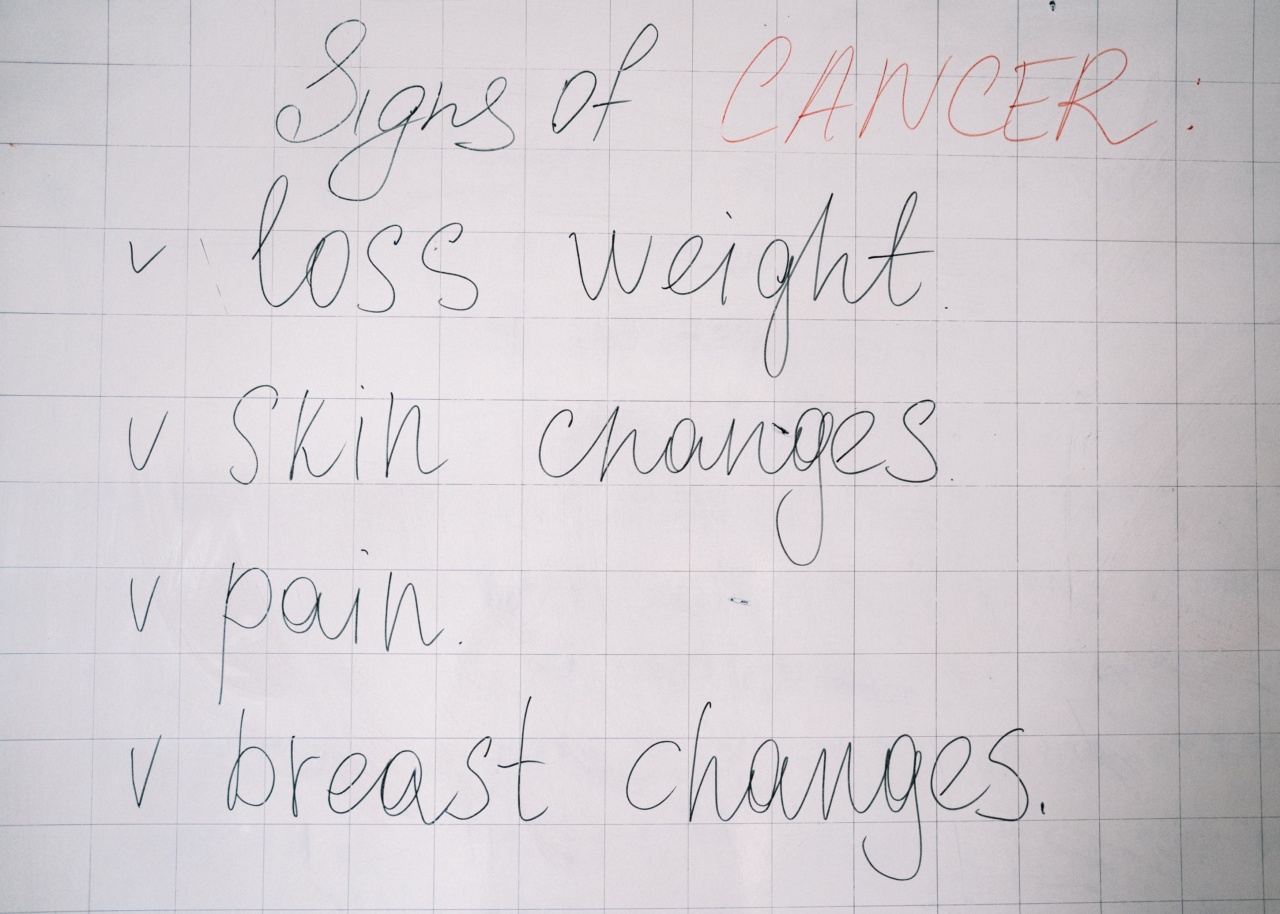A brain aneurysm is a common brain condition where the walls of the arteries in the brain bulge and weaken, forming a balloon-like structure that can rupture and cause bleeding.
This can lead to serious health complications and even death if left untreated.
Brain Aneurysm Warning Signs
Knowing the warning signs of a brain aneurysm can help you seek treatment before it is too late. Common brain aneurysm warning signs include:.
1. Headache
A headache is one of the most common warning signs of a brain aneurysm. It can occur suddenly or gradually, and it may be severe or mild. Headaches caused by brain aneurysms are often described as a sharp, pounding pain that worsens over time.
2. Nausea and Vomiting
Nausea and vomiting can also be symptoms of a brain aneurysm. These symptoms can occur with or without a headache, and they may occur suddenly or gradually.
3. Pain Above or Behind an Eye
Pain above or behind an eye is another common warning sign of a brain aneurysm. This pain can be severe and sudden, and it may come and go. It can also be accompanied by visual changes such as blurred vision or double vision.
4. Dilated Pupils
Dilated pupils are a sign that there is increased pressure in the brain. This can be a warning sign of a brain aneurysm, especially if it is accompanied by other symptoms such as a severe headache or confusion.
5. Seizures
Seizures are another warning sign of a brain aneurysm. They can occur suddenly and without warning, and they may be mild or severe. Seizures can also be accompanied by other symptoms such as a headache or confusion.
6. Confusion or Difficulty Concentrating
Confusion or difficulty concentrating is also a warning sign of a brain aneurysm. This can occur suddenly or gradually, and it may be accompanied by other symptoms such as a headache or nausea.
7. Stiff Neck
A stiff neck is a common symptom of a brain aneurysm. This can occur suddenly or gradually, and it may be accompanied by other symptoms such as a headache or fever.
8. Sensitivity to Light
Sensitivity to light is another common warning sign of a brain aneurysm. This can be accompanied by other symptoms such as a headache or confusion.
9. Loss of Consciousness
Loss of consciousness is a serious warning sign of a brain aneurysm. This can occur suddenly and without warning, and it may be accompanied by other symptoms such as a severe headache or confusion.
10. Sudden Weakness or Numbness on One Side of the Body
Sudden weakness or numbness on one side of the body is a warning sign of a stroke, which can be caused by a ruptured brain aneurysm.
This can occur suddenly and without warning, and it may be accompanied by other symptoms such as a severe headache or confusion.
When to Seek Medical Help
If you experience any of the above-mentioned symptoms, it is important to seek medical help immediately. Early diagnosis and treatment can help prevent serious complications and even save your life.
Preventing Brain Aneurysms
While there is no sure way to prevent brain aneurysms from occurring, there are certain lifestyle changes and habits that can help reduce your risk of developing this condition. These include:.
1. Quitting Smoking
Smoking is a major risk factor for brain aneurysms, as it can weaken the walls of the blood vessels in the brain. Quitting smoking can help reduce your risk of developing this condition.
2. Eating a Healthy Diet
A healthy diet rich in fruits, vegetables, whole grains, lean proteins, and healthy fats can help reduce your risk of developing a brain aneurysm. Avoiding foods high in cholesterol, saturated fats, and sodium can also help.
3. Exercising Regularly
Regular exercise can help improve your overall health and reduce your risk of developing a brain aneurysm. Aim for at least 30 minutes of moderate-intensity exercise most days of the week.
4. Managing Your Blood Pressure
High blood pressure is a major risk factor for brain aneurysms. Make sure to get your blood pressure checked regularly and take steps to manage it if it is high.
5. Reducing Stress
Chronic stress can increase your risk of developing a brain aneurysm. Finding ways to manage stress, such as through meditation, exercise, or therapy, can help reduce your risk.
Conclusion
Brain aneurysms are a serious and potentially life-threatening condition. Knowing the warning signs of a brain aneurysm and taking steps to prevent them can help reduce your risk of developing this condition.
If you experience any of the warning signs of a brain aneurysm, seek medical help immediately.





















